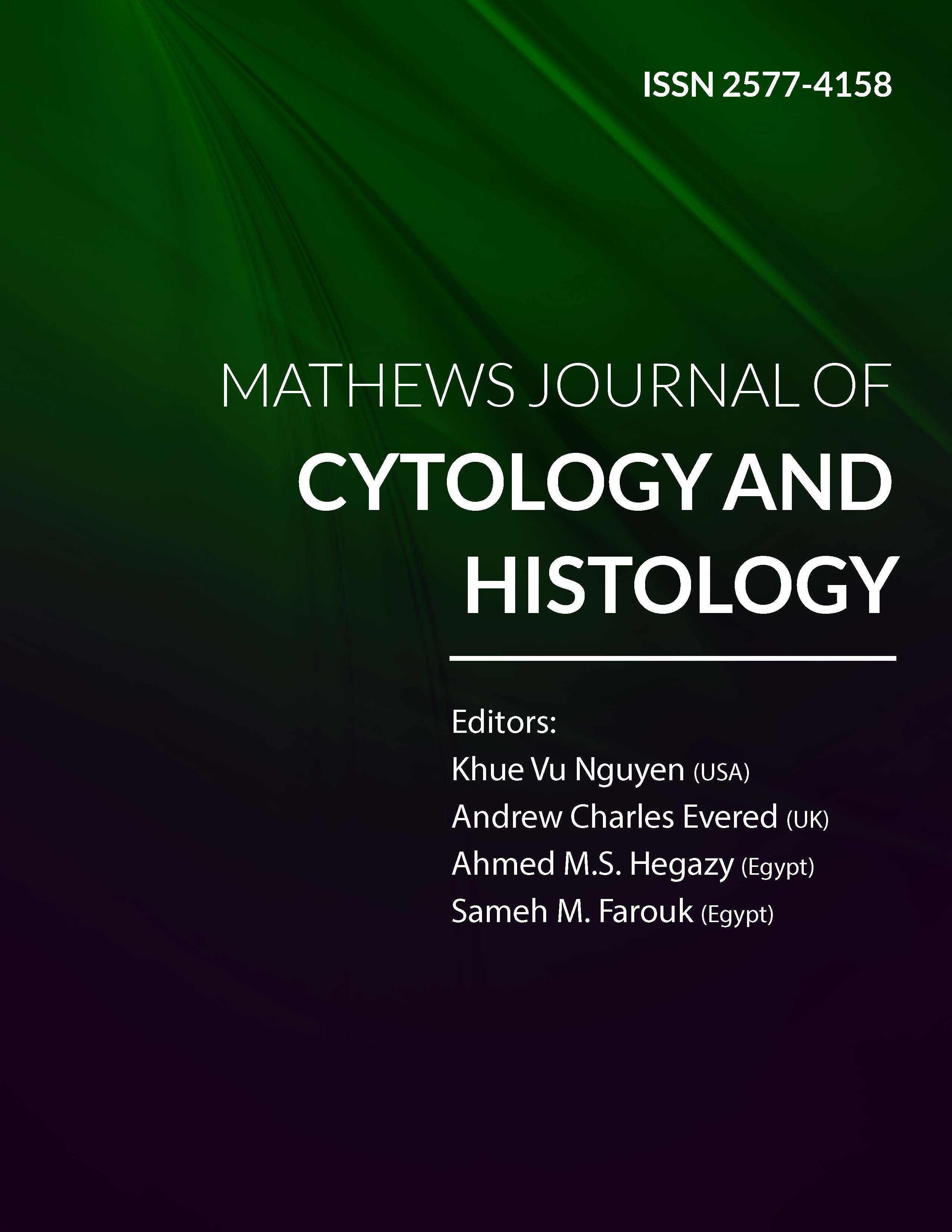
Information Links
Previous Issues Volume 1, Issue 1 - 2017
A New Mechanism of Cartilage Growth in mammals “Involvement of CD117 Positive Undifferentiated Cells in Interstitial Growth”
Soha Abdel-lateif Soliman1*, Hanan Hassan Abd-Elhafeez2, Enas Abdel-Hafez2
1Department of Histology, Faculty of Veterinary Medicine, South Valley University, Qena 83523, Egypt.
2Department of Anatomy and Histology, Faculty of Veterinary. Medicine, Assuit University, 71526, Egypt.
Corresponding Author: Soha Abdel-lateif Soliman, Department of Histology, Faculty of Veterinary Medicine, South Valley University, Qena 83523, Egypt, Tel: +201006500848;
E-Mail: [email protected]
Received Date: 03 Apr 2017
Accepted Date: 08 Apr 2017
Published Date: 12 Apr 2017
Copyright © 2017 Soha Soliman A
Citation: Soha Soliman A, Hanan Hassan A and Enas A. (2017). A New Mechanism of Cartilage Growth in mammals “Involvement of CD117 Positive Undifferentiated Cells in Interstitial Growth”. Mathews J Cytol Histol. 1(1): 001.
ABSTRACT
Two types of cartilages growth are commonly described; the appositional growth and interstitial growth. The manner of production of new cartilage matrix is different in both types. Appositional type relies on the addition of peripheral matrix upon activation of the perichondrial stem cells and interstitial growth depends on the secretion of new cartilage matrix by chondrocytes progeny. The current study described a different type of cartilage growth in different skeletal elements of camel embryos. Camel embryos were collected, fixed, dehydrated, and embedded in paraffin. Paraffin sections of the whole embryos were stained with H&E, Crossman trichrome and Mallory trichrome. Immunohistochemical staining for CD117 and type II collagen were used in embryonic cartilage. Other samples were processed to be examined by scanning electron microscopy. An Early Embryonic skeleton represented by cartilaginous elements. Undifferentiated cells continuing with the perichondrium penetrated the growing cartilage of ribs, pelvic bone, scapula, and sternum. The cells were CD117 positive and morphologically resembled the undifferentiated mesenchymal cells; they appeared spindle or flattened in shape with an oval nucleus and were connected by cytoplasmic processes. The orientation of the invaded cells could be as low or high cellular densities or as individual cells. The invaded mesenchymal cells transformed to chondrocytes and produce new cartilage matrix. They were immune-stained for Type II collagen The cellular penetration aimed to supply the developing cartilage by undifferentiated cells destined to become chondrocytes and involved in the interstitial growth of the fetal cartilage.
KEYWORDS
Cartilage Growth; Mesenchymal cells; Differentiation; Quail; Embryos